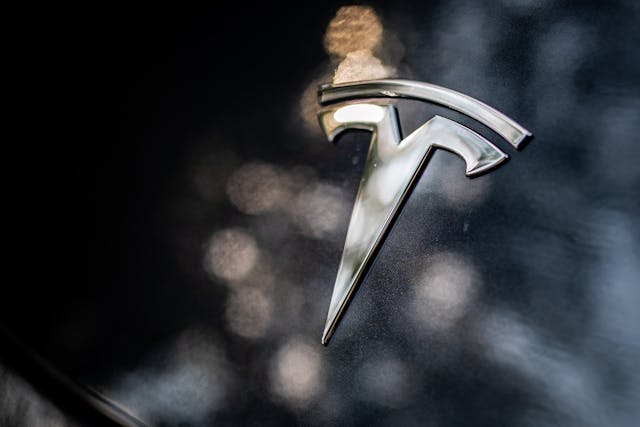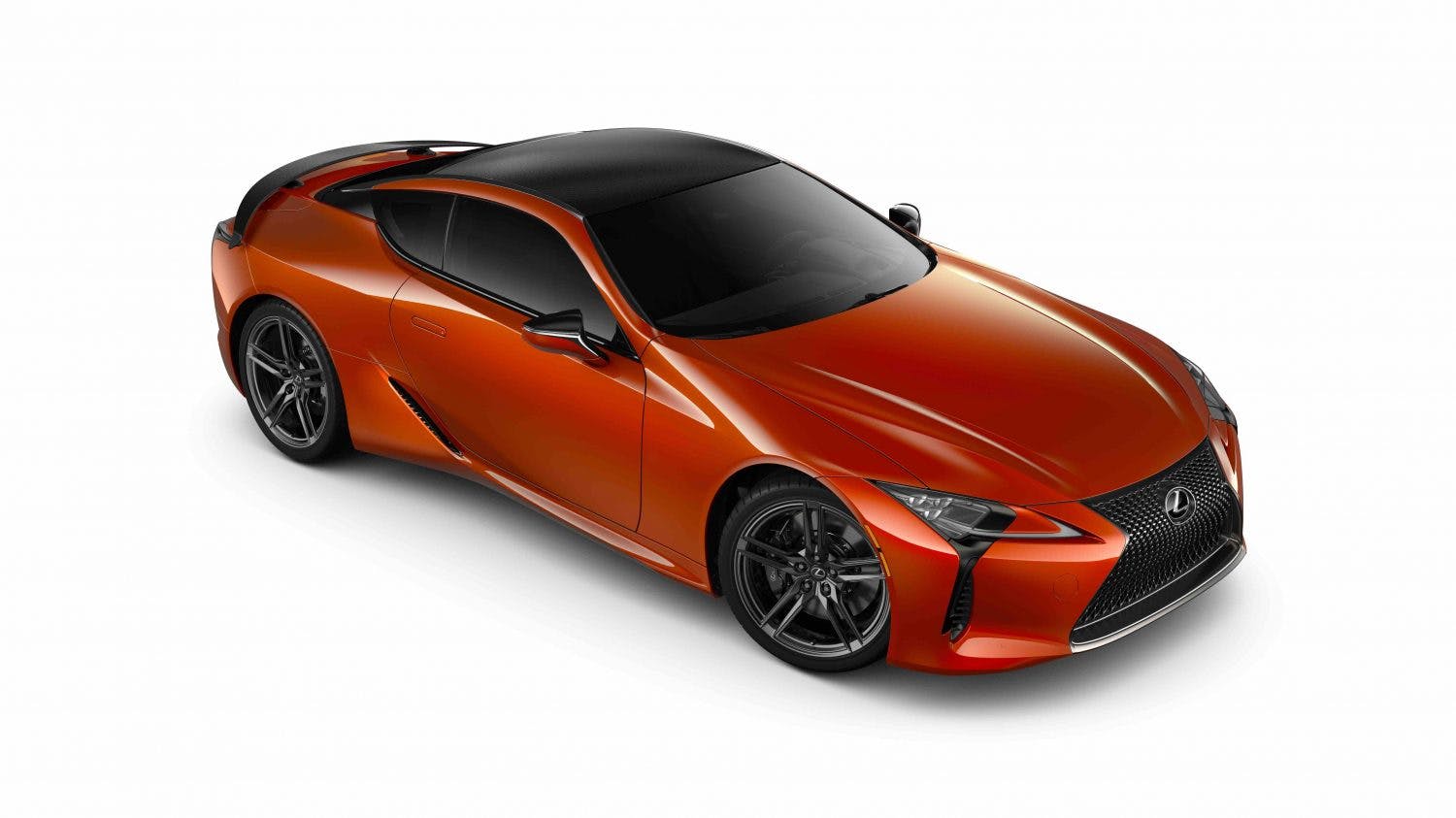A new Ranger approaches, Lexus LC 500 gets personal, Ford Sierra Cosworth … continued
Next-gen Ranger breaks cover on November 24
Intake: The mid-size pickup battleground is about to gain an improved challenger. Ford’s new Ranger will be revealed on November 24, squaring off against impending overhauls to the Colorado and Canyon twins from GM, as well as the stalwart Toyota Tacoma and all-new Nissan Frontier. To get the edge, Ford says it conducted thousands of interviews and dozens of truck workshops all over the globe to find out how folks use its trucks and what Ford could do to make the Ranger even more useful to one’s daily routine. The result, according to Ranger chief designer Max Tran, is a “truly global pickup truck.”
Exhaust: Whatever “truly global” means, it seems like Ford is once again committing to a single platform for the Ranger that will be shared for all markets. Unlike the outgoing generation, don’t expect there to be that many adjustments to the American market truck, which in its current form is a bit of a late-addition also-ran in the mid-size segment. From the teaser image above, we can see wide, horizontally-opposed C-shaped DRLs that create a wide, upright face, much like that of the new Maverick. Expect there to be more visual similarities between the two pickups.
Lexus turns up the personalization for the 2022 LC 500
Intake: Lexus is giving LC 500 customers more personalization options for the 2022 model year. For the first time in the model’s existence, potential buyers can utilize a new Bespoke Build program to configure their gorgeous coupe in even more ways. The build is based upon the sport package, which already nets a limited-slip rear diff, Yamaha rear damper, and high performance brake pads. Through Bespoke Build, customers get access to a special interior color (an orange-tinged color called Manhattanhenge), and the carbon fiber wing and 21-inch black forged alloy wheels perviously only offered on the limited-run LC 500 Inspiration Series. New LC 500s will also benefit from revised suspension tuning that’s said to enhace ground contact feel, linear steering response, and better turning performance in high-G cornering maneuvers. The 2022 LC 500 will begin at $93,050, while the 2022 LC 500h will begin at $99,050. Both will arrive in dealerships late next year.
Exhaust: The Bespoke Build program is a welcome improvement to the LC’s buying experience. A car of this nature is not even purchased by accident, so the move to give would-be buyers an opportunity to further customize their rides is smart on Lexus’ part. The new interior isn’t quite as appealing as the Toasted Caramel interior in our eyes—our recent LC 500 convertible test car had the perfect color combo, in our eyes—but it’s a neat option that will no doubt get some folks really excited—perhaps Halloween fanatics.
Is this Cossie the coolest continuation car so far?
Intake: A legend of Touring Car racing is being brought back to life. British company CNC Motorsport AWS is building three examples of the 1990 Andy Rouse Engineering Ford Sierra RS500 Cosworth Group A race car, each of which will be eligible for historic racing. In its heyday, the be-winged “Cossie” dominated touring car series across the world, winning championships in the UK, Australia, New Zealand, Germany and Japan. The homologation special was built on a special three-door version of the popular Sierra family car and, as the name suggests, just 500 road-going versions were made. CNC’s continuation cars will be in full race trim with a 583-hp, Cosworth-designed, two-liter four-banger under the hood. Drive goes to the rear wheels via a Getrag five-speed gearbox and a nine-inch viscous differential. “Demand for competitive Group A machines is rising, enabling access to some of the best motorsport events around the globe for correct cars,” said Alan Strachan, founder of CNC Motorsport AWS. “RS500s are great fun to drive, relatively easy to maintain and considerably more affordable to run than Super Touring cars. RS500s are also a great draw for the fans that fondly remember these fire-breathing monsters. The cars will be all signed off by Andy, just as we did in period, with the provenance that can only come from the man who engineered and drove the cars to such success.” Prices start at £185,000 ($252,400) and the first car is due to be ready early in 2022.
Exhaust: Whether at Brands Hatch or Bathurst, the Sierra RS500 always wowed the crowds so the prospect of three “new” examples taking to the track in historic races is very appealing. The first car will be even be built on a previously unused “909” Ford Sierra Motorsport bodyshell, and Andy Rouse himself is fully behind the project. “When Alan told me he had acquired a brand new bodyshell, we came up with the idea to build correct continuation cars just as we did in our Binley workshop. Having seen Alan develop his own engineering business, he was the only person I trusted to build cars that would carry the ARE build plate,” said the touring car ace.
New battery tech will store more energy for the half the price in future Teslas

Intake: A prototype battery developed by Panasonic is claimed to have five times the storage capacity of existing cells, but cost significantly less. Panasonic battery chief Kazuo Tadanobu said the 4680 battery (named for its 46 mm x 80 mm size) would have a radical impact on Tesla, allowing battery production increase by a factor of 100 by 2030 and cut costs in half. “We have developed this because of the strong desire of the other party (Tesla), and we think this can only lead to stronger ties,” said Tadanobu.
Exhaust: Tesla recently announced that it was shifting its standard range models over to less expensive Lithium Iron Phosphate (LFP) batteries which are currently cheaper. Such is the pace of change in battery technology that this development by Panasonic could flip that decision on its head, actually increasing the range of Tesla models while reducing the costs.
Rare SVT Cobra R intake manifold comes to light
Intake: Y2K Mustang bodies lucky enough to be created for SVT’s Cobra R trim package live a far more charmed life than most Mustangs of the same vintage remaining on the road today. The same is true of other parts, like this prototype intake manifold used by Ford’s Special Vehicle Team to tweak and tune the Cobra R’s 5.4-liter “Modular” V-8 engine. According to the forum post on SVTPerformance.com that first discovered the part, the intake manifold is one of two units made. The paint pen markings on the side denote that portions of this one were extrude honed, a high tech manufacturing process to get air pathways to take on certain shapes. It lacks the perfect fit and finish of a mass-produced part, and offers handcrafted tricks to alter airflow properties.
Exhaust: For some this is just a hunk of scrap aluminum. But for SVT fans, this intake manifold is a window in time, before the era of 3-D printing, rapid prototyping, etc. when metal parts were still fettled by hand to tune-in certain performance characteristics. Individual parts for vintage Shelby and Boss Mustangs are now worth a small fortune, especially examples with an interesting history. As the 2000 Cobra R appreciates in value, how closely will its componentry mimic their forefathers’ in desirability and value?
Sneak a peek at Toyota’s upcoming EV

Intake: The concept of a battery electric vehicle is hardly new, but today’s automakers are jumping in with both feet—even hybrid-focused Toyota. The upcoming bZ4X falls under Toyota’s “beyond Zero” brand umbrella and was announced this spring, but it wasn’t til this week that any real details emerged. The TNGA-platform car appears to be roughly RAV4 sized, and was co-developed with Subaru for global markets, including the U.S., Europe, Japan, and China. With a battery capacity of about 64.0 kWh, the bZ4x should offer a range of 200-230 miles depending on front- or all-wheel drive configuration, making 201 or 215 hp, respectively. Toyota is aiming says it plans to introduce the bZ4x by mid-2022, along with seven Toyota bZ models by 2025.
Exhaust: Yet another BEV is hardly notable at this point, but it is a big deal for Toyota. Remember, this is the brand that has dominated green mobility with its hybrid drivetrains and made huge investments into hydrogen fuel cell cars like the Mirai. If you need any more convincing of Tesla’s ability to steer the strategies of its competitors, look no further than the bZ4x’s over-the-air update capability and a Toyota version of the yoke steering wheel.







